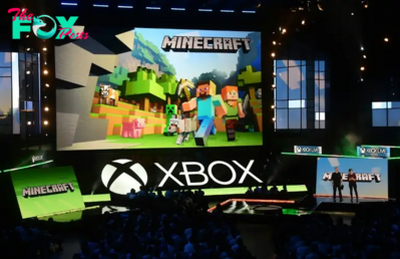Technology
Ford's new holographic technology features interactive displays for drivers and passengers
Ford, working with Scottish company Ceres Holographics, showed off last week what could become the future of head-up displays, or HUDs as they’re commonly known.
HUDs almost magically display useful information such as speed and turn-by-turn directions on the lower part of the windshield, where it can be seen without taking the driver’s eyes off the road.
For years now, automakers and their suppliers have imagined an autonomous world in which cars drive themselves, and the glass currently needed to see traffic could be turned into big display scenes at will. But the arrival of full self-driving is still a long way off
At a conference in Detroit, Ford displayed an interim step: what might be called HUD 2, a bright, clear display stretching across the windshield with three sections, two for the driver and one for the passenger.
The latter, which could include projected video, would not be visible to the driver.
Andy Travers, the CEO of Ceres Holographics, says that the new display possibilities could be interactive, and help solve the dangerous situation of driver distraction using current controls.
“It’s compelling cost-wise for automakers to put everything on the screen,” Travers says. “And they’re hiring programmers who are used to working with computers, not mobile cars that need to have drivers watching the road. We think it’s a lot better to make choices from projected images on the windshield than having to look away to a centrally mounted screen.”
The windshield incorporates Ceres-developed (with Eastman and Carlex) thin-film technology that is produced with embedded holographic optical elements and then sandwiched between laminated glass sections to enable a transparent display of any kind of information. Travers says the film will not discolor over time. An inexpensive LED projector, technology in use now, is built into the instrument panel.
Regulators are taking notice of the distraction problem. According to Matthew Avery, director of strategic development at the safety agency Euro NCAP, “the overuse of touchscreens is an industry-wide problem, with almost every vehicle maker moving key controls onto central touchscreens, obliging drivers to take their eyes off the road and raising the risk of distraction crashes.”
Janice Tardiff, a coating application technical expert at Ford, says the passenger display on its initial prototype vehicles would target entertainment and possibly business applications.
The driver would get fuel or charge level, speedometer, navigation, and, on the center display, points of interest and music. In a customer clinic testing the technology, participants liked the idea of being able to see sports events and movies, but weren’t sure that the clarity was sufficient for business applications. Some wanted the displays to be bigger.
Use of the film has been thoroughly tested and approved for next-generation HUD use, Tardiff says. The next steps are to improve color, brightness, and resolution, optimize the size of the displays, and ensure good performance under different light conditions, she says.
HUD was an option on the Oldsmobile Cutlass in 1988, and it’s been steadily evolving since. Other companies are working on holographic technology, including Hyundai, Stellantis, Jaguar Land Rover, and General Motors. Technology shown by a U.K. company called Envisics on this year’s Chrysler Halcyon EV concept car imagined images on auto windows that would show points of interest along the chosen route, allow video calls en route, and map constellations in the night sky.
But not all of this would be able to go into current cars. “While all this visual information is probably too distracting for a driver in control of the vehicle, it may not be when the vehicle is operated in an autonomous Level Four mode,” according to Envisics. “At this level, the driver can relax and utilize these functions and features.”
But some of it will be seen soon. A Chrysler/Dodge spokesman, Darren Jacobs, said via email, that “select design elements and features [seen on the Halcyon] like the head-up display and SmartCockpit are ready for production and will be included in Chrysler’s first all-electric vehicle.”
The Ford-Ceres technology is possible for production today, and it could lower driver distraction and prove satisfying for auto buyers—especially if image clarity can be improved.
.
-

 Technology42m ago
Technology42m agoPublic health surveillance, from social media to sewage, spots disease outbreaks early to stop them fast
-

 Technology5h ago
Technology5h agoWhy a Technocracy Fails Young People
-

 Technology17h ago
Technology17h agoTransplanting insulin-making cells to treat Type 1 diabetes is challenging − but stem cells offer a potential improvement
-

 Technology23h ago
Technology23h agoShould I worry about mold growing in my home?
-

 Technology23h ago
Technology23h agoBlurry, morphing and surreal – a new AI aesthetic is emerging in film
-

 Technology2d ago
Technology2d agoRethinking screen time: A better understanding of what people do on their devices is key to digital well-being
-

 Technology2d ago
Technology2d agoAn 83-year-old short story by Borges portends a bleak future for the internet
-

 Technology2d ago
Technology2d agoFacebook users in Germany can seek compensation for 2018–2019 data misuse | The Express Tribune




























